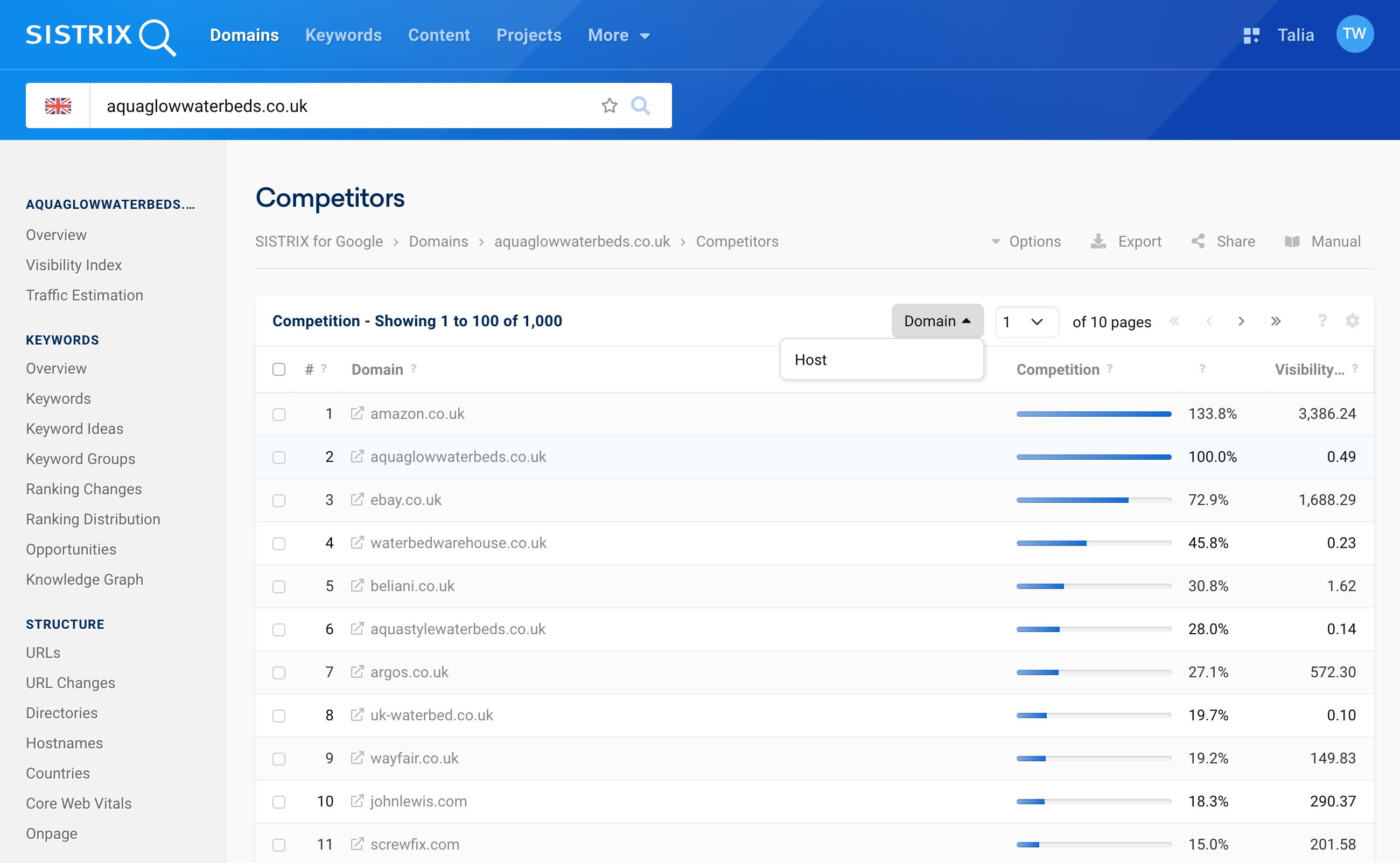SISTRIX provides different means for you to find your competitors. This tutorial will show you ways for a quick analysis of your competitors.
Analysing Competitors in SISTRIX
For good search engine optimisation, you should know and observe your competition. The first step is to enter your domain into the search field in SISTRIX. In this example, we will use the domain aquaglowwaterbeds.co.uk – a specialised online retailer for waterbeds – and look at who the competitors are for this market.
Levels of competitor analysis
In SISTRIX, you can identify competitors on two levels in particular:
- Predefined keyword level
- Entire domain level
These two ways do not lead to the same result, which is why you should always use them complementarily to identify your competitors.
In this tutorial, we will find out the competitors of aquaglowwaterbeds.co.uk.
Research with a keyword
Researching with a keyword in SISTRIX is the simplest option. The results here would closely match the Google search results for that search term but, unlike the search engine, SISTRIX shows changes in the results and can, if desired, be used to see the history of a domain for the respective keyword.
If we enter “waterbeds” into the search field of SISTRIX, the following table appears:
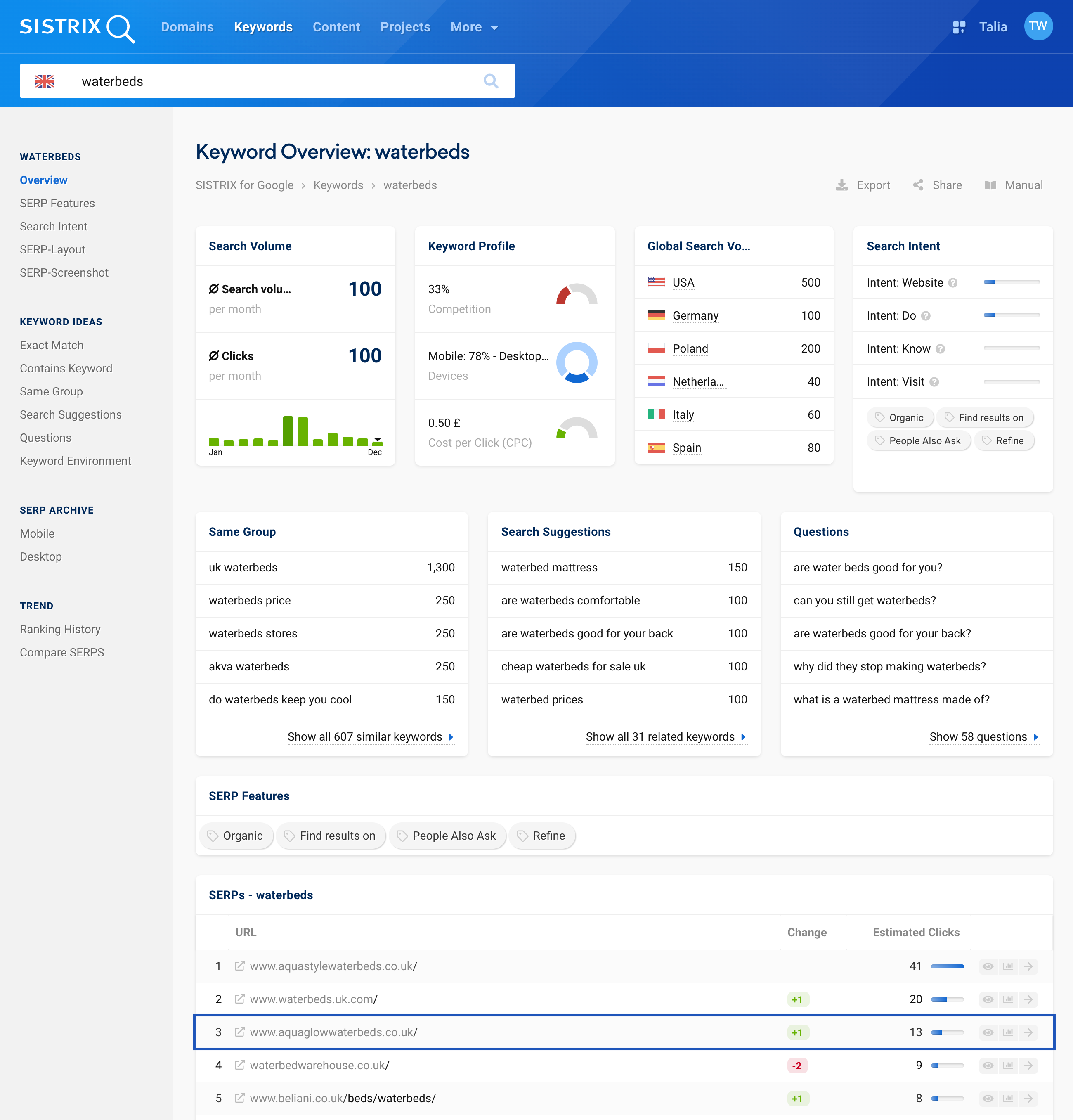
You will now see potential competitors of the domain in the SERPs table at the bottom. All of them rank in important positions for the search term “waterbeds”. Our example page is on position 3. We also see that there have been changes in the first few positions compared to the previous week (the green +1 or the red -2 in the URL row).
If we now want to set up a competitor monitoring system or something similar to monitor and compare our rankings in the SISTRIX onpage projects, we can use the most relevant competitors from this list.
The buttons next to the respective results contain important features. If you click on the button “Show Keyword History” (the diagram symbol), for example, you will see the ranking history for this domain for the specified search term, in our case for the keyword “waterbeds”.
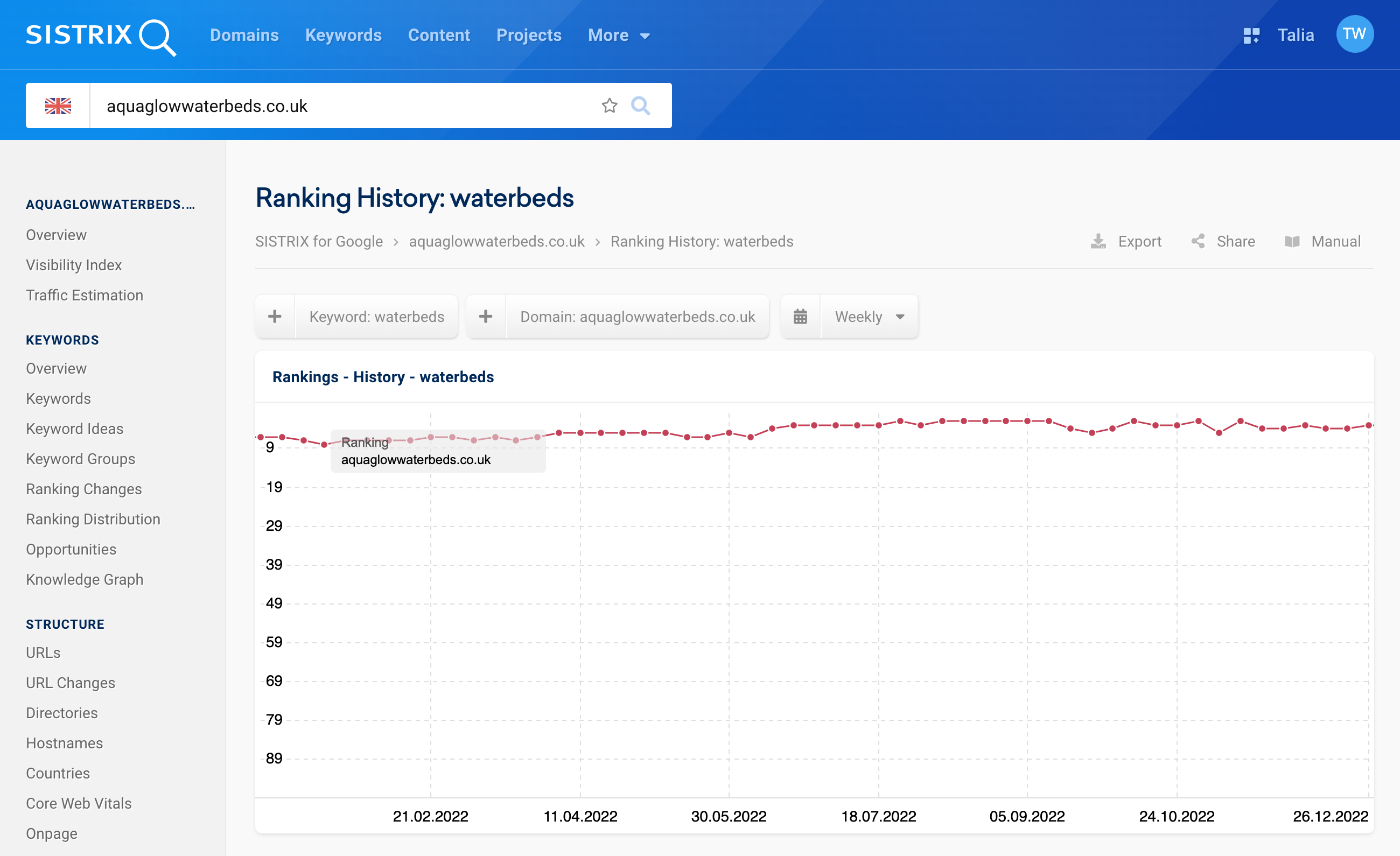
We see, for example, that our domain aquaglowwaterbeds.co.uk has a very stable ranking on the first SERP over time for the keyword “waterbeds”.
With this keyword history, you can also click on the cogwheel icon in the upper right corner of the graph (it appears when you move the mouse in the diagram) and select “Overlay Data“. There you can add up to 3 more domains to the graph. This is important for keeping an eye on the trends of your competitors.
For our example page, this could look like this:
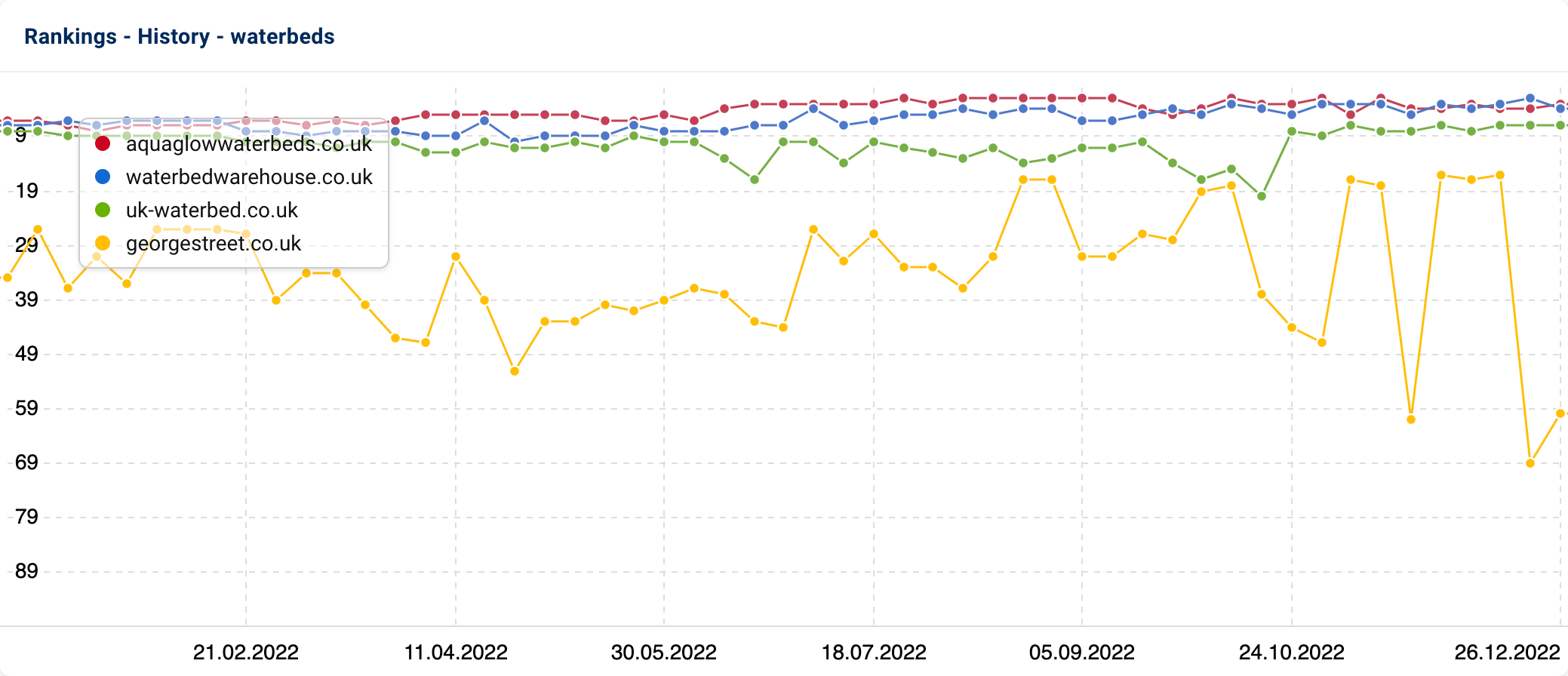
In the case of the domain georgestreet.co.uk, the yellow line in the picture, it can be observed that its ranking for the keyword “waterbeds” fluctuates strongly and that the domain is also repeatedly not even to be found in the top 10 results for the search term.
Using just one keyword, however, is usually not enough to find out your competition. That is why, as already mentioned, we are now also taking a look at the competitors on the basis of the entire domain.
Research on a domain level
In the first step, we enter the domain into the search field in SISTRIX. Then we click on “Competitors” in the navigation menu to the left.
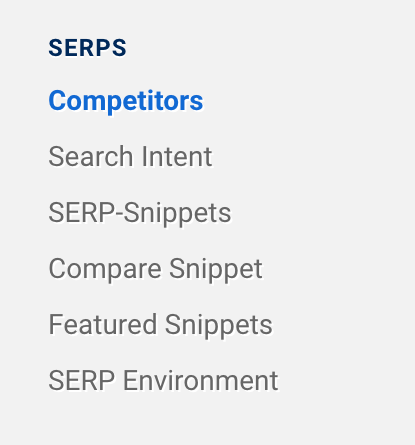
There we have the choice whether we want to analyse using the entire domain or using the hostname 1. In this example, we will use the entire domain.
In the competition table, the evaluated domain always has 100 percent 2, with the competitive strength of the competitors shown in relation to that.
For this tutorial, we have only displayed the first 10 results. Some of the results are already known from the previous evaluation, but there are also very promising domains.
While such a competitor analysis may result in some outliers, the evaluation is structured to bring to light actual keyword competitors and not simply Wikipedia, eBay and Amazon.
Conclusion
Whether using a keyword or the entire domain – with SISTRIX, you can quickly track down your relevant competitors. In the end, you will, of course, have to also use your own criteria to determine whether you are really dealing with an actual competitor. The more time you spend on finding the correct search phrases for your selection, the better the results will be.
